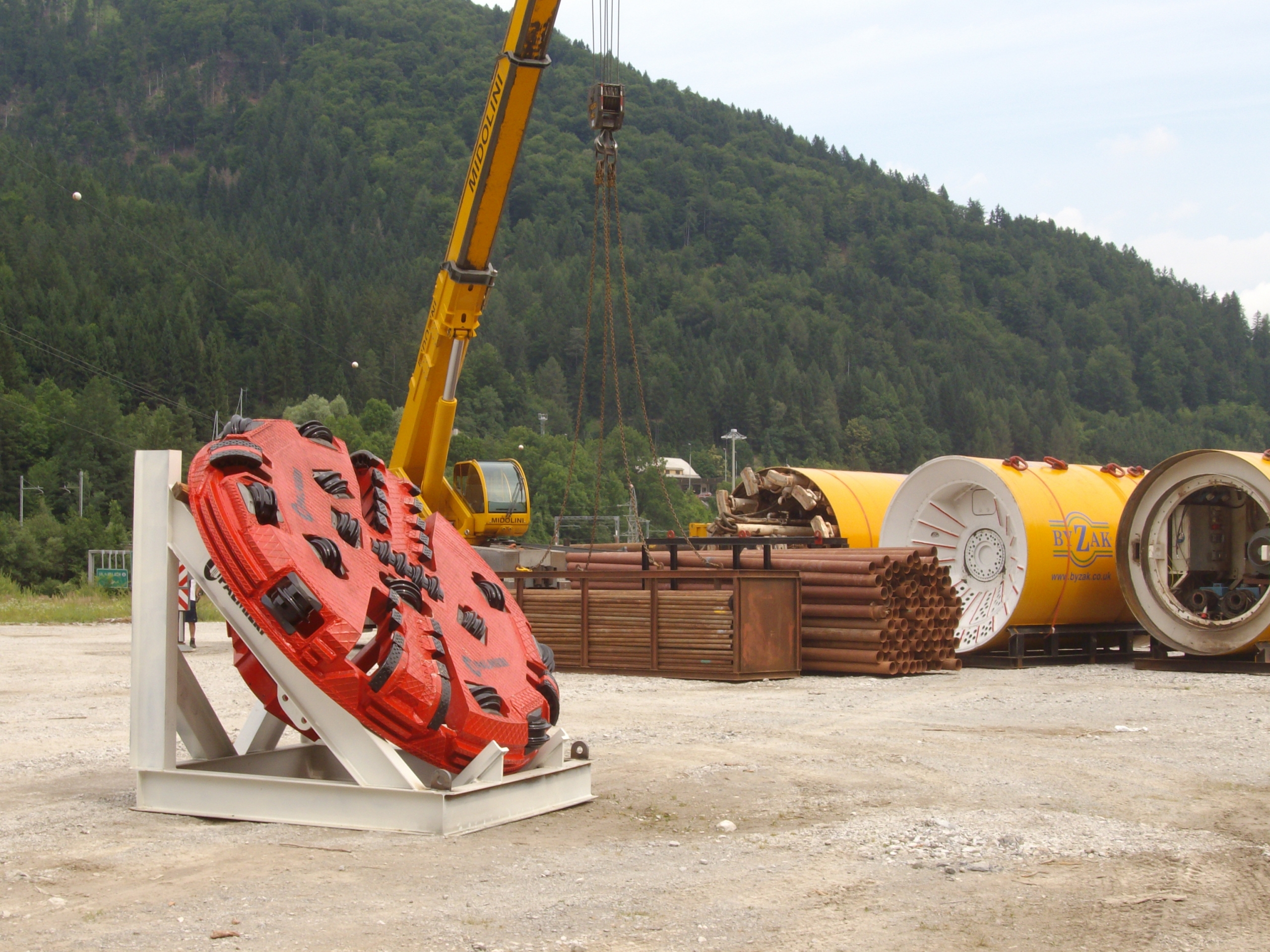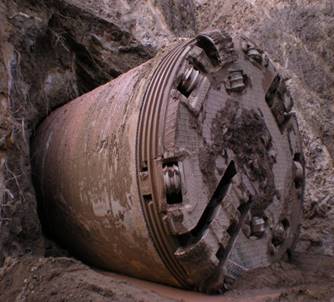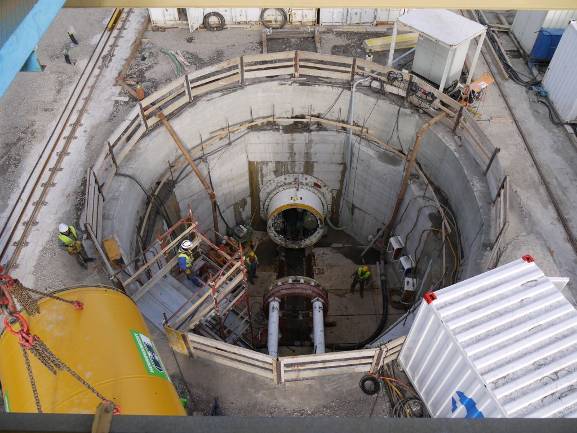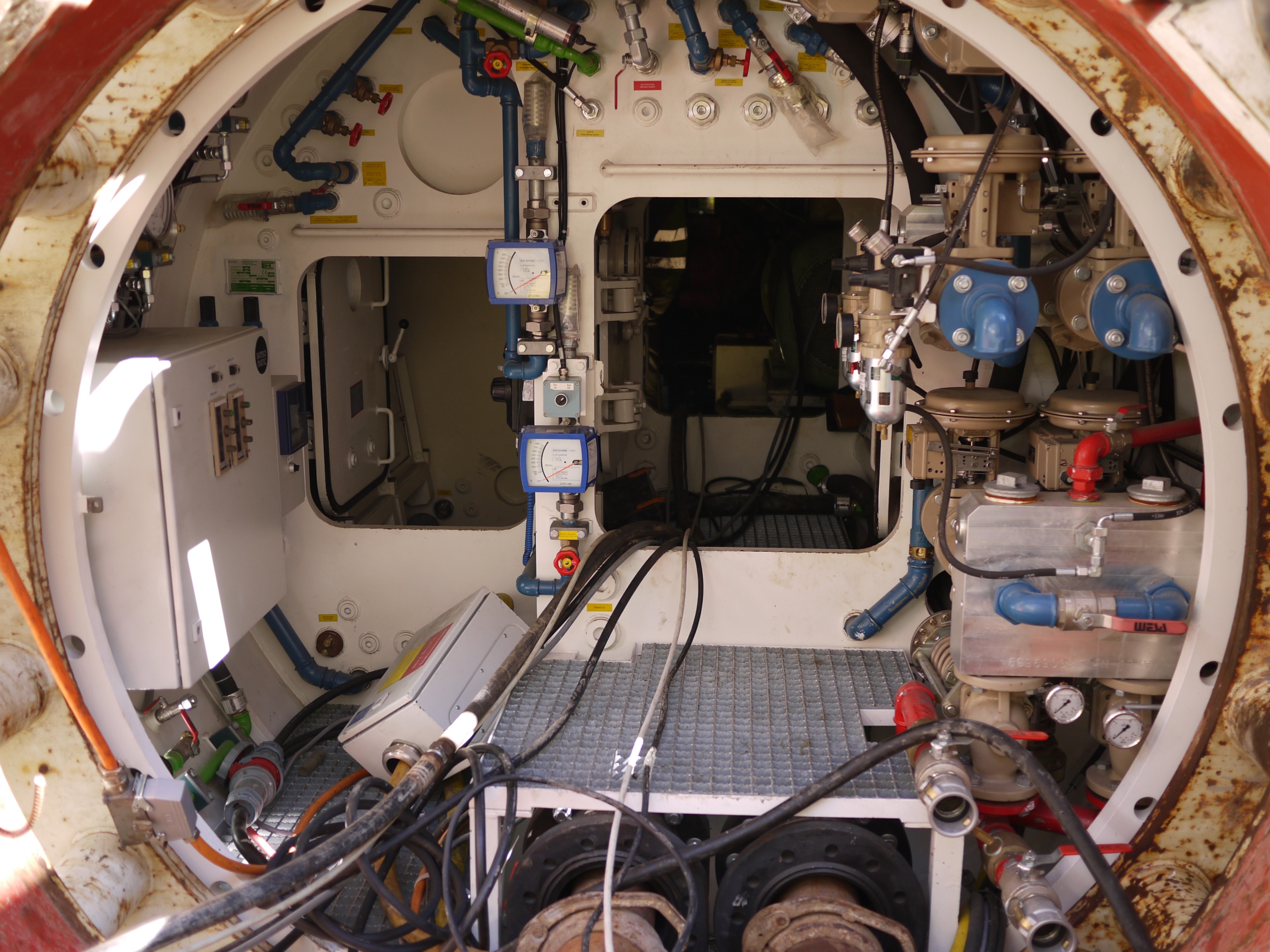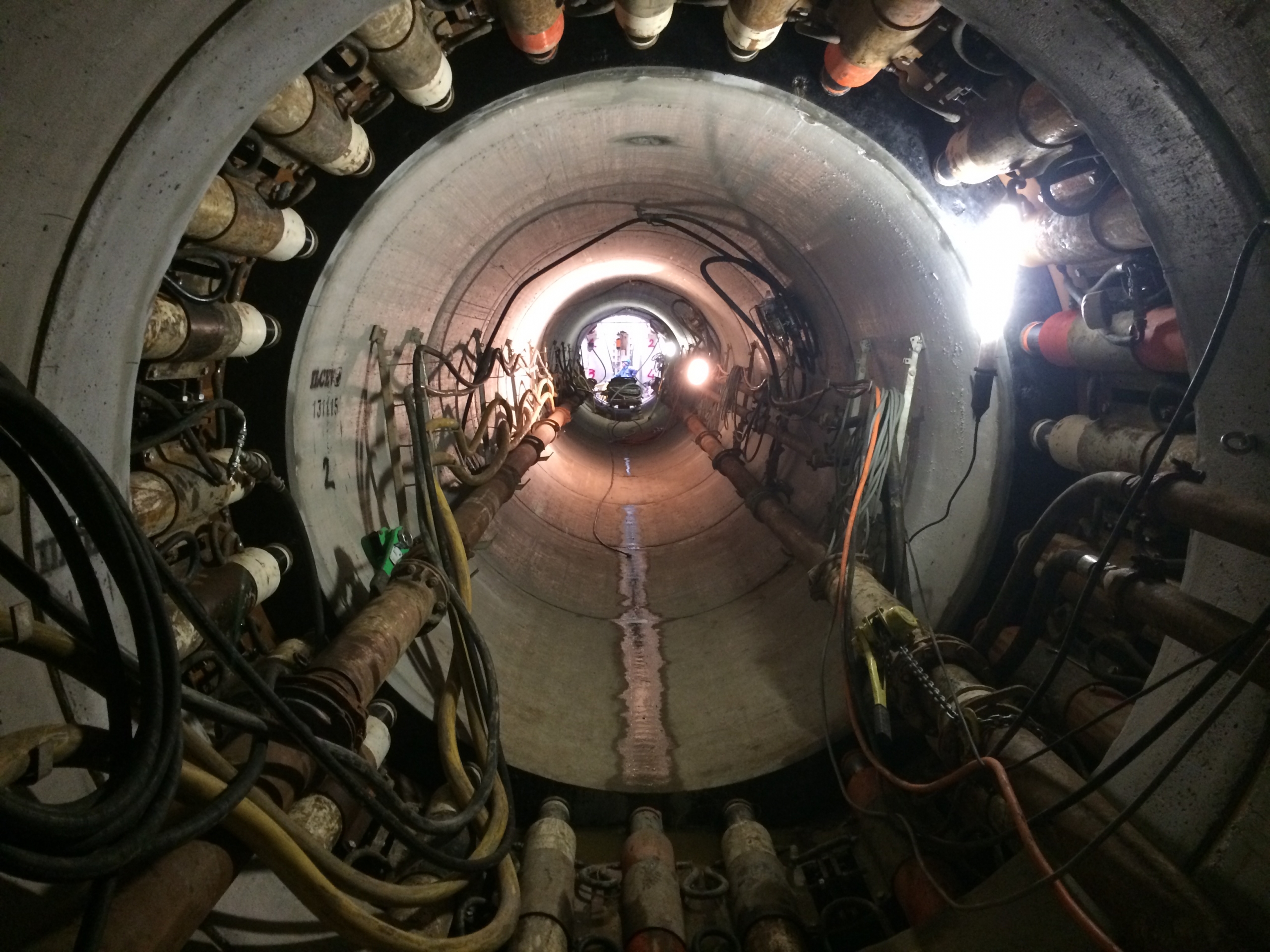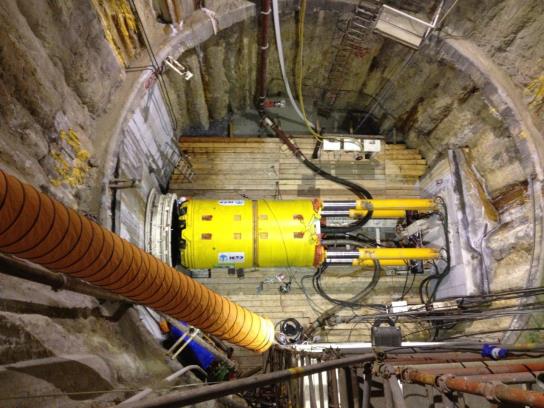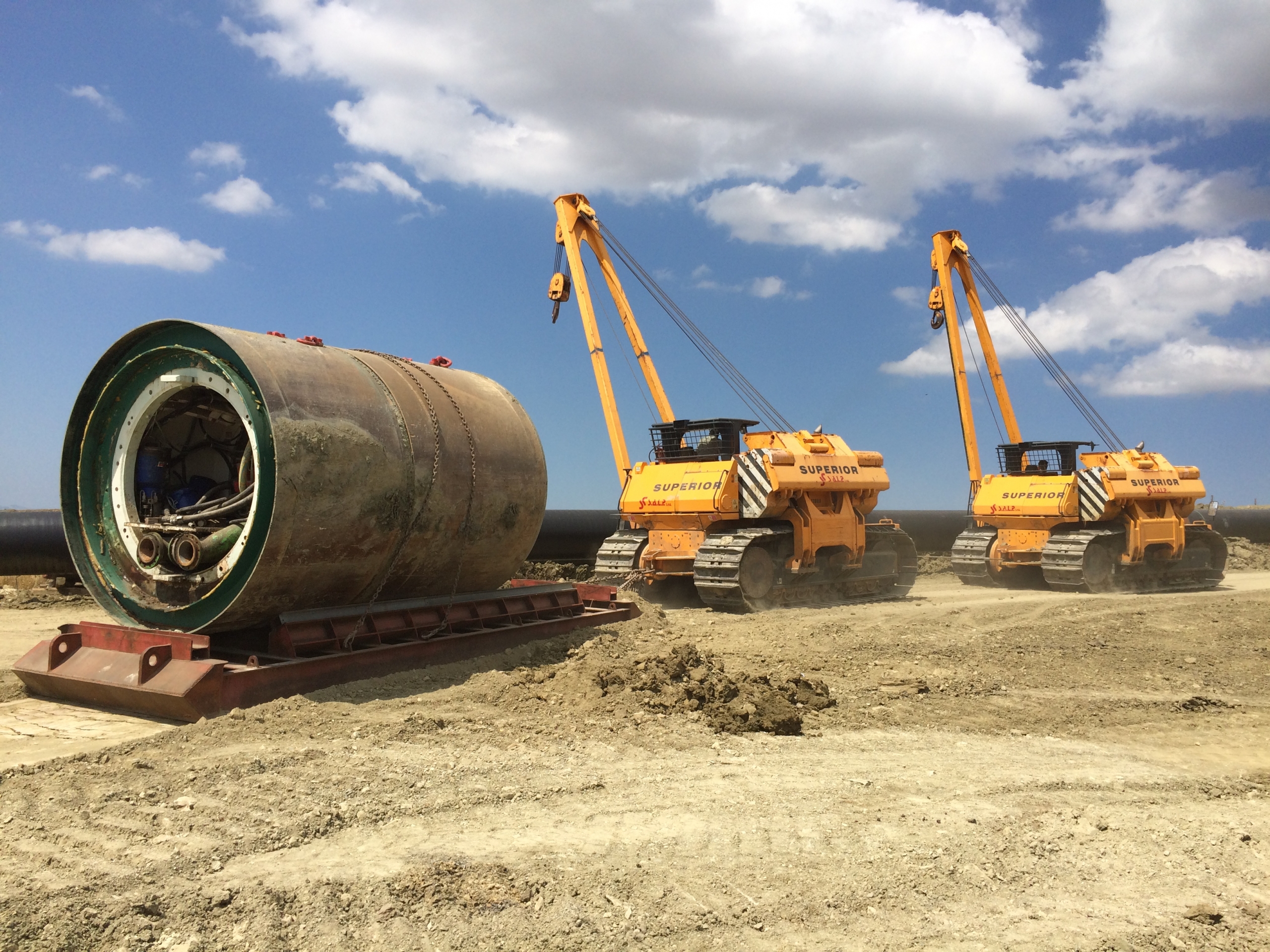The excavation method is based on the use of a fluid that, depending on the characteristics of the soil, can consist of water or a mixture of water and bentonite, which have a dual function: to support the excavation face during the advancement, ensuring the balance of the pressures acting on it, and to act as a means of transport for the excavated material, allowing it to be removed and kept away from the excavation face in the form of slurry (a mixture of disintegrated and fluid soil). The circulation of the fluid takes place by means of a closed hydraulic circuit, integrated in the milling shield.
The microtunneller is driven from the outside, by means of a control console located inside a container placed on the surface, near the starting shaft. The console allows to check and adjust the parameters concerning the excavation activity. The microtunneller guidance system is based on a continuous detection of the milling shield position through a laser beam, which hits an incorporated photosensitive target. The information is transmitted to the computer of the control console, which determines the exact position, and any necessary corrections to be made. These corrections are made by means of three/four hydraulic jacks, which can be activated individually. These jacks act on the head of the milling shield, modifying its orientation. In this way, it is possible to obtain tolerances of ± 3 cm vertically and ± 10 cm horizontally.
The full section excavation, with mechanical and hydraulic support of the excavation face, the continuous control with laser pointing system in order to check the directionality, and the simultaneous control of the drilling and progress parameters by the operator, guarantee a safe and precise execution.
The drilling system also allows the laying of the pipeline even under the water table: the closed drilling head and the use of a special header ring in the starting shift guarantee the hydraulic seal under leaves up to 30 m.

